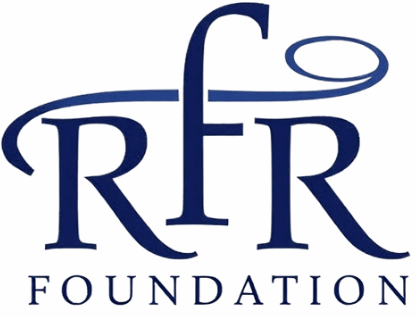The Border Security Force (BSF) has officially released the notification for the recruitment of 1121 Head Constable posts through the BSF Head Constable Online Form 2025. This recruitment is one of the most anticipated opportunities for candidates seeking a career in defense and paramilitary services. With over a thousand vacancies, aspirants have a golden chance to secure a government job with attractive benefits, job security, and immense respect.
In this article, you will find all the details regarding eligibility, application process, selection procedure, salary, and important instructions to guide you through the BSF Head Constable recruitment.
About BSF Head Constable Recruitment 2025
The Border Security Force (BSF) is India’s first line of defense on the international borders and is one of the largest paramilitary forces in the country. Head Constables in BSF play a crucial role in communication, technical support, and ground operations. The recruitment for Head Constable (Ministerial/Radio Operator/Radio Mechanic and other categories) is aimed at strengthening the force with skilled and disciplined personnel.
Key Highlights of BSF 1121 Head Constable Recruitment 2025
| Particulars | Details |
|---|---|
| Organization | Border Security Force (BSF) |
| Post Name | Head Constable |
| Total Vacancies | 1121 |
| Mode of Application | Online |
| Job Location | Across India |
| Eligibility | 10+2 / Diploma (as per post requirement) |
| Last Date to Apply | To be announced in the official notification |
| Selection Process | Written Exam, Physical Test, Skill/Trade Test, Medical, Document Check |
| Official Website | BSF official recruitment portal |
Eligibility Criteria
Before applying for BSF Head Constable recruitment, candidates must check the required eligibility conditions.
1. Educational Qualification
- For Head Constable (Ministerial): Candidates must have passed 10+2 (Intermediate) from a recognized board. Typing speed requirements may apply.
- For Head Constable (Radio Operator/Radio Mechanic): Candidates should have 10th pass with ITI/Diploma in relevant trade OR 10+2 with Physics, Chemistry, and Mathematics.
2. Age Limit
- The minimum age is 18 years, and the maximum is 25 years.
- Age relaxations will apply for SC, ST, OBC, Ex-servicemen, and other categories as per government rules.
3. Nationality
- The applicant must be a citizen of India.
Overview Table
| Aspect | Description |
|---|---|
| Post Name | Head Constable |
| Authority | Border Security Force (BSF) |
| Total Vacancies | 1121 |
| Application Mode | Online |
| Selection Procedure | Written Test, PST/PET, Skill Test, Medical, Document Verification |
| Eligibility Requirement | 10+2 / Diploma / ITI (depending on post) |
| Job Location | Across India |
Application Process
The BSF Head Constable recruitment process is completely online. Candidates can follow these steps:
- Visit Official Website – Go to the BSF recruitment portal.
- Register Online – New users need to register with basic details such as name, contact number, and email ID.
- Fill Application Form – Provide educational qualifications, personal details, and category information.
- Upload Documents – Upload scanned copies of photographs, signatures, and certificates as per guidelines.
- Pay Application Fee – Pay the fee using online payment options like net banking, debit card, or credit card.
- Final Submission – Review the application, submit it, and take a printout for reference.
Selection Process
The BSF Head Constable selection process is designed to assess the candidates’ knowledge, physical standards, and skills. It includes multiple stages:
- Written Examination – Objective-type test based on General Knowledge, Reasoning, Numerical Aptitude, and subject-specific questions.
- Physical Standard Test (PST) & Physical Efficiency Test (PET) – Candidates must meet height, chest, and fitness standards, along with running and endurance tests.
- Skill/Trade Test – For certain categories like RO/RM, trade/technical skill tests will be conducted.
- Medical Examination – Comprehensive health check to ensure fitness.
- Document Verification – Verification of all educational and category certificates before final appointment.
Salary and Benefits
BSF offers one of the most attractive pay scales in paramilitary services for Head Constables.
- Pay Scale – Level 4 in the Pay Matrix (approx. ₹25,500 – ₹81,100 per month).
- Allowances – Dearness Allowance (DA), House Rent Allowance (HRA), Transport Allowance, Medical Benefits, and Risk Allowances.
- Other Benefits – Pension, job security, insurance coverage, and career growth opportunities through promotions.
Conclusion
The BSF 1121 Head Constable Online Form 2025 offers an excellent opportunity for candidates aspiring to join India’s frontline defense force. With over a thousand vacancies, attractive pay, and job security, this recruitment is one of the best chances for young aspirants to secure a stable and respected career. Interested candidates must apply within the given timeframe and prepare diligently for both written and physical tests to succeed in the selection process.
FAQs
Q1. What is the total number of vacancies in BSF Head Constable Recruitment 2025?
There are 1121 vacancies for Head Constable posts.
Q2. What is the eligibility for BSF Head Constable 2025?
Candidates must have passed 10+2 or hold a diploma/ITI in relevant fields, depending on the post.
Q3. What is the selection process for BSF Head Constable Recruitment 2025?
The process includes a written exam, physical tests, skill/trade test, medical examination, and document verification.
